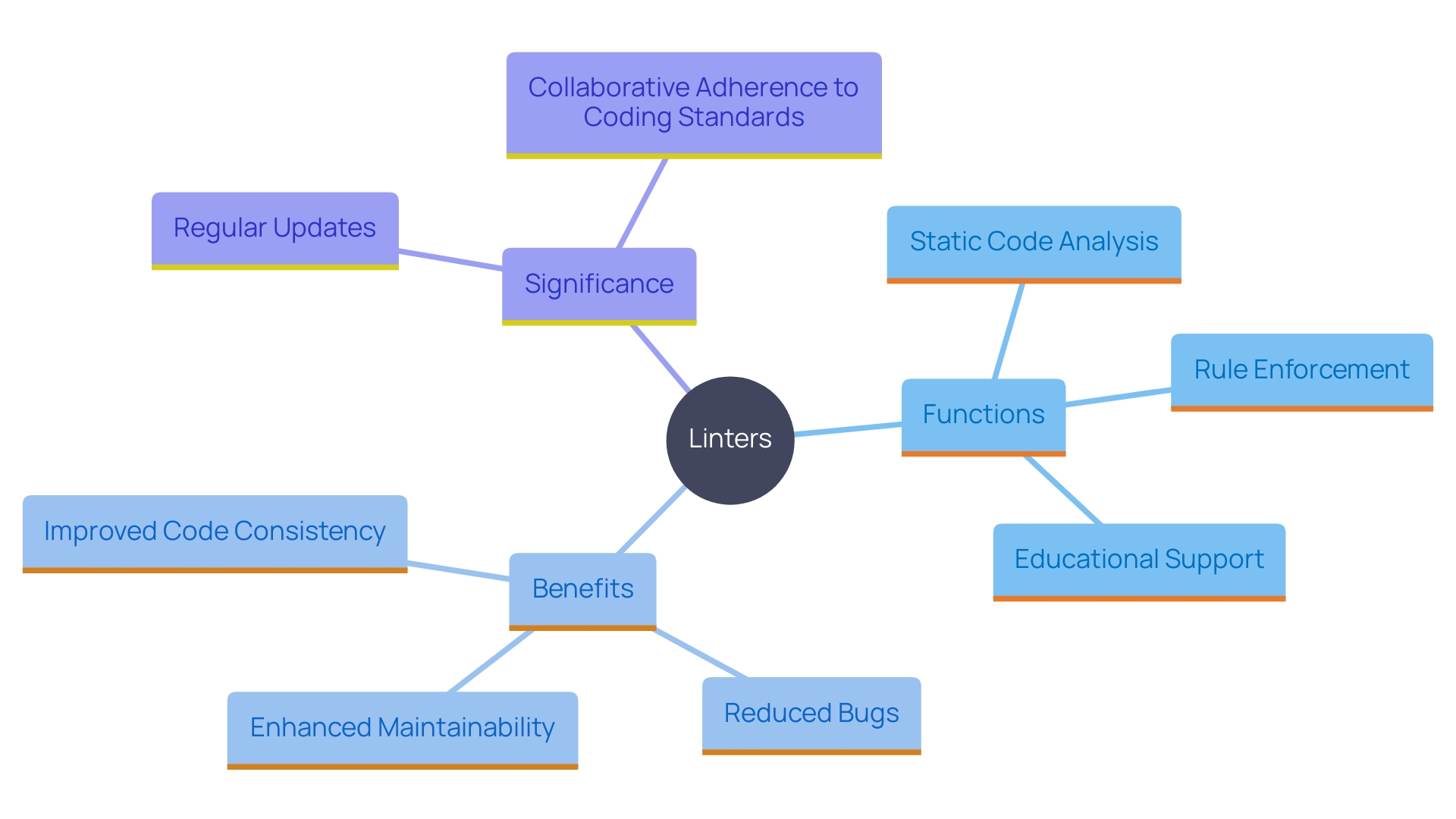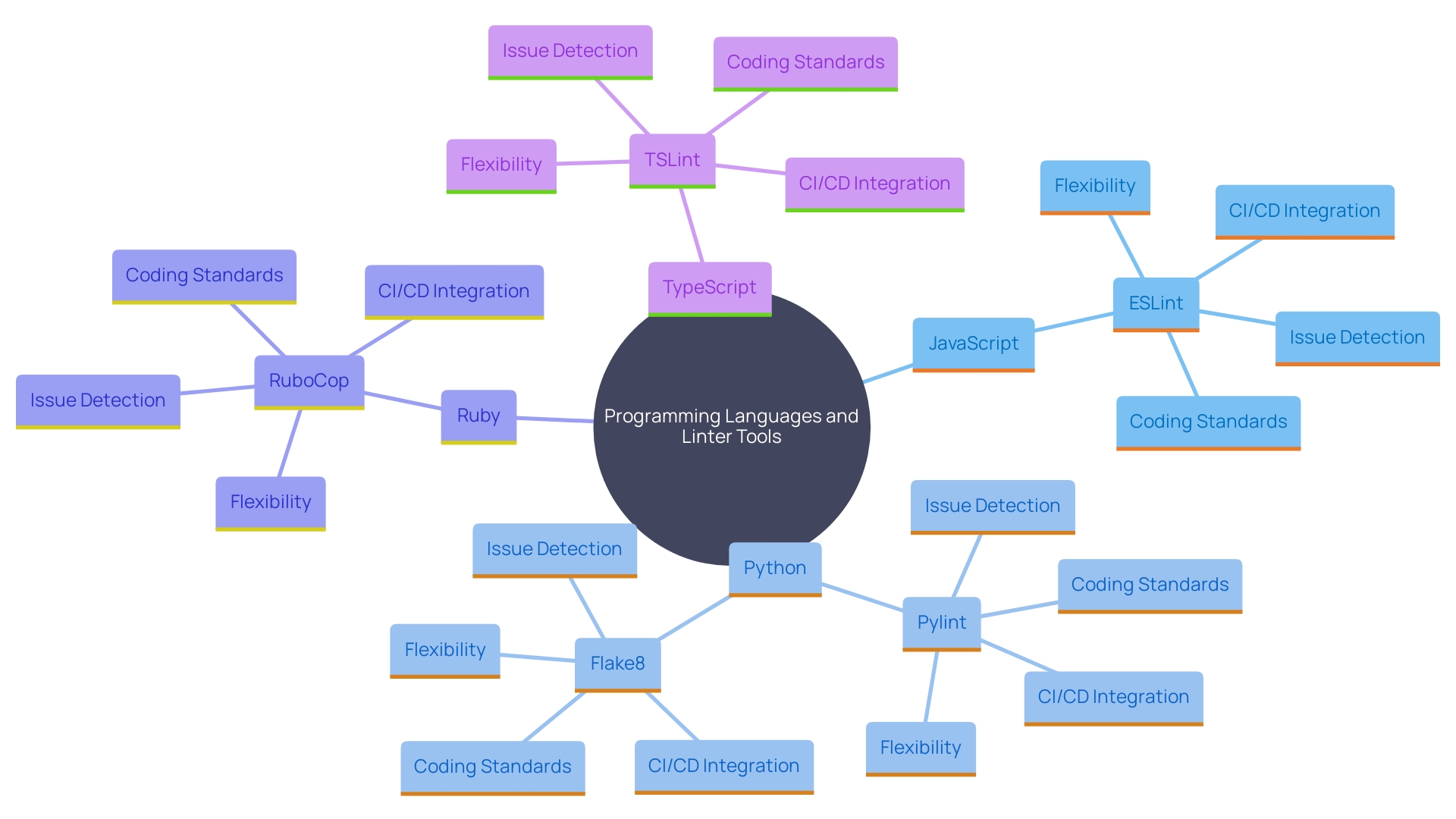Introduction
In the fast-paced world of software development, maintaining high code quality and consistency is paramount to ensure that projects run smoothly and efficiently. Enter the linter—a powerful static code analysis tool designed to scrutinize source code, detect errors, bugs, stylistic issues, and other potential problems before they cause havoc in production. This article delves into the intricacies of linters, exploring their functionality, the significant benefits they offer, and the most popular tools available today.
From enhancing code maintainability to boosting productivity and ensuring adherence to coding standards, discover how leveraging linters can transform the development process, making it more reliable, efficient, and productive.
What is a Linter?
A linter is an essential static analysis tool that scrutinizes source material to detect programming errors, bugs, stylistic issues, and potentially problematic constructs. By catching these issues early, linters significantly enhance the quality and maintainability of software, ensuring that it adheres to predefined standards and best practices. Modern linters like ESLint allow for extending configurations and applying updates incrementally, making it simpler and safer to introduce new rules. 'This gradual approach, where new and modified files adhere to updated linter rules during reviews, prevents the daunting task of overhauling an entire project at once.'. Linters are not solely focused on enforcing coding style; they also guarantee correctness, keep up with new development methodologies, and utilize the latest language features. Regularly refreshing linter settings can result in more dependable and resilient codebases, reducing the chance of unnoticed issues and enhancing overall software quality.
How Does a Linter Work?
Linters operate by analyzing the code statically, meaning they scrutinize the code without running it. They analyze the codebase and implement a collection of established guidelines designed to ensure consistency, identify possible issues, and maintain best practices. When a linter discovers rule violations, it flags these issues by generating warnings or errors, often coupled with corrective suggestions. This proactive identification assists developers in aligning their programming with coding standards, reduces the occurrence of bugs, and upholds high standards.
The function of linters has developed beyond simple style enforcement; they are now essential for ensuring accuracy and utilizing the latest language features. A well-maintained linter configuration is vital. Regular updates to linter rules can be seamlessly integrated through incremental changes in new or modified files, thereby preventing the daunting task of overhauling the entire project at once. This gradual adoption of updates, as seen in tools like ESLint, which supports configuration extensions using modern syntax, ensures that programming standards enhance continuously without overwhelming developers.
Moreover, linters serve as excellent educational tools for new contributors, guiding them to adhere to project-specific coding standards. This educational aspect is especially advantageous in collaborative settings where upholding uniform standards across various contributors is crucial. The uniformity provided by linters not only improves readability but also increases maintainability, assisting in the early identification of mistakes and security vulnerabilities, thereby simplifying the debugging process and promoting strong, efficient software environments.

Benefits of Using a Linter
Utilizing a linter provides significant advantages such as better quality of programming, increased uniformity across projects, and early identification of mistakes. Linters play a crucial role in saving time and cutting down debugging costs by identifying issues early in the development process. For instance, at Google, the use of machine learning-suggested modifications has significantly boosted productivity, allowing engineers to focus on more creative and complex tasks. Additionally, M&T Bank, a well-established institution, emphasizes the significance of upholding high standards to prevent expensive security breaches and guarantee regulatory compliance during their digital transformation.
Along with these benefits, linters encourage compliance with programming standards, which is essential for team collaboration. Incorporating linters within a continuous integration and continuous deployment (CICD) workflow guarantees that only compliant scripts are merged, progressively adding new rules without interrupting the entire project. This process not only standardizes best practices but also promotes a unified programming environment, as highlighted by developers' experiences with tools like ESLint. By implementing uniform programming standards, linters support collaboration and uphold high standards in software, ultimately enhancing efficiency and productivity in software development.
Popular Linter Tools
In the realm of programming, various linter tools have become indispensable for maintaining code quality and consistency. For JavaScript, ESLint is a leading tool, known for its flexibility and powerful configuration options. It allows developers to enforce coding standards and even auto-fix certain issues with the --fix flag. Python programmers frequently rely on Pylint and Flake8, both of which provide thorough issue detection and uphold PEP 8 guidelines. Ruby developers depend on RuboCop, which not only examines for syntax issues but also provides a broad array of adjustable guidelines to maintain consistency in programming. TypeScript's TSLint, although now deprecated in favor of ESLint with TypeScript support, was known for its strong type-checking capabilities that helped catch errors early in the development process.
These tools are more than just syntax checkers; they can enforce best practices and programming standards across entire teams, reducing technical debt and making reviews more efficient. For instance, incorporating these tools into a Continuous Integration/Continuous Deployment (CI/CD) pipeline ensures that non-compliant software is flagged before it ever reaches production, thereby maintaining a high standard of development excellence. As pointed out by specialists, integrating tools such as Husky, ESLint, and Prettier can establish a smooth development workflow that enhances quality and consistency from the outset, facilitating collaboration among team members and the maintenance of the codebase over time. By standardizing coding practices, these tools help teams avoid the pitfalls of inconsistent code styles, ultimately enhancing productivity and reducing the risk of bugs and merge conflicts.

Conclusion
The exploration of linters reveals their pivotal role in modern software development, emphasizing the importance of maintaining high code quality and consistency. By serving as a static code analysis tool, linters help identify programming errors, bugs, and stylistic issues before they escalate into significant problems. Their ability to enforce coding standards and best practices not only enhances the maintainability of code but also fosters a collaborative environment among developers, ensuring that all contributors adhere to established guidelines.
The functionality of linters, which involves static analysis and incremental updates, allows for a seamless integration into existing workflows. This proactive approach to error detection minimizes debugging costs and enhances overall efficiency in the development process. With the adoption of modern tools like ESLint, teams can enjoy the benefits of flexible configurations that support the continuous improvement of code quality without overwhelming developers with drastic changes.
Utilizing linters also translates to tangible benefits for organizations, such as improved productivity and reduced technical debt. By incorporating linters into Continuous Integration/Continuous Deployment (CI/CD) pipelines, teams can ensure that only compliant code is merged, significantly lowering the risk of introducing bugs and enhancing the overall reliability of the software. Ultimately, leveraging linters not only streamlines the development process but also cultivates a culture of excellence in coding practices, driving both efficiency and productivity across projects.
Frequently Asked Questions
What is a linter?
A linter is a static analysis tool that examines source code to find programming errors, bugs, stylistic issues, and potentially problematic constructs. It helps improve the quality and maintainability of software by ensuring adherence to established standards and best practices.
How do linters improve software quality?
Linters catch issues early in the development process, which enhances the overall quality of the software. They ensure that code complies with predefined guidelines, reduces the occurrence of bugs, and helps maintain high coding standards.
What are some modern linter tools?
Some popular linter tools include: ESLint for JavaScript, known for its flexibility and powerful configuration options; Pylint and Flake8 for Python, which help uphold PEP 8 guidelines; RuboCop for Ruby, which checks for syntax issues and maintains programming consistency; and TSLint for TypeScript, now deprecated in favor of ESLint with TypeScript support.
How do linters work?
Linters operate by analyzing code statically, meaning they review the code without executing it. They identify rule violations and flag them with warnings or errors, often providing corrective suggestions to help developers align their programming with coding standards.
What are the benefits of using a linter?
Using a linter offers several advantages, including improved code quality and consistency across projects, early identification of mistakes which saves time and reduces debugging costs, and support for team collaboration by enforcing uniform coding standards.
How do linters fit into the development workflow?
Linters can be integrated into Continuous Integration/Continuous Deployment (CI/CD) workflows. This ensures that only compliant code is merged, allowing for the gradual introduction of new rules without disrupting the entire project.
Why is it important to update linter configurations?
Regularly updating linter configurations helps maintain a reliable and resilient codebase. It allows developers to adopt new coding standards and language features progressively, preventing the overwhelming task of overhauling the entire codebase at once.
Can linters help new contributors?
Yes, linters serve as educational tools for new contributors by guiding them to adhere to project-specific coding standards. This is especially beneficial in collaborative environments where maintaining uniform standards is crucial.
How do linters reduce technical debt?
By enforcing best practices and coding standards across teams, linters help reduce technical debt. They make code reviews more efficient and flag non-compliant code before it reaches production, thus maintaining development excellence.




